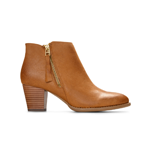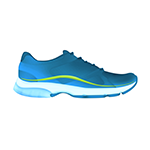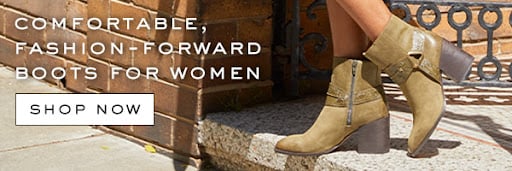
How to Store Shoes

If you looked in your closet right now, would you find your shoes neatly stored on a shelf, in boxes, or in a DIY shoe storage solution? Or would they be heaped in a pile on the floor? If you fall into the latter category—don’t kick yourself, the shoe-pile happens to the best of us.
Learning how to store shoes isn’t just about aesthetics. It’s also about keeping your shoes in good condition to prevent damage, extend their lifespan, and save money in the long run.
If your shoe storage game could use a little brushing up, then you’re in the right place. We’ve compiled everything you need to know about how to store shoes, including proper ventilation, temperature, and humidity, along with the best storage methods for different types of shoes and tips for getting the most mileage out of your shoes.
Proper Ventilation, Temperature, and Humidity
Ventilation, temperature, and humidity play a crucial role in long term storage for your shoes. Trapped moisture and extreme temperatures can encourage the growth of mold and bacteria that can cause bad odors and mildew stains. In addition, direct sunlight can also age your shoes faster, just like it ages your skin. Here’s how to manage each of these damaging factors:
- Ventilation – The simplest way to ensure proper ventilation is by keeping your shoes in an area with air flow. Avoid storing them in sealed containers. Instead, use a ventilated shoe storage solution that allows for air circulation.
- Temperature – Extreme temperatures can cause damage to shoes, such as cracking or warping. It’s best to store shoes in a cool, dry place, away from direct sunlight or heat sources.1 That unfinished attic or basement? Not the best place to store the vintage heels Grandma wore at her wedding.
- Humidity – High humidity levels can lead to mold growth and yellowing. Using dehumidifiers or silica gel packets can help regulate humidity levels. However, shoes can also become too dry, leading to crumbling midsoles, cracking, and shrinking. Take the humidity of your region into account when deciding whether you need a dehumidifier or silica gel in your shoe storage.
- UV light – If you like to display your shoe collection, keep in mind that direct sunlight causes oxidation. This leads to signs of deterioration like yellowing and cracking. Some yellowing over time is inevitable, but the more UV radiation your shoes are exposed to, the faster oxidation will happen.
Best Storage Methods for Different Types of Shoes
The basic best practices for storing and maintaining footwear apply to all types of shoes:
- Clean your shoes before storing
- Let shoes air out for 24 hours after wearing before putting into storage
- Store in a well-ventilated, dark, cool area
However, there are also some specific tips and tricks that can help you keep your favorite types of shoes in tip-top condition. We’ll go into those in more detail below.
Storing Sneakers and Athletic Shoes
Sneakers are some of our most hard-working shoes. They get muddy, wet, dusty, and sweaty, so they need a bit of extra TLC to keep them in good shape.
- Best practices for storage – To avoid mildew, smells, and stains, always clean your sneaks before you store them. Stuff with acid-free paper to maintain their shape and prevent creasing. Store in bags inside boxes, or use clear plastic containers with lids and ventilation holes to protect from dust and allow air circulation.
- Original boxes – If you’re a sneaker collector, you may want to hold onto the original boxes to help your special sneaks retain maximum resale value. However, cardboard boxes aren’t the best storage solution since they typically aren’t acid-free. They will also break down over time, which can dent or crease the shoes inside. Instead, store the boxes separately (you can break them down and store them flat to save closet space).
- Common mistakes to avoid – Especially as it pertains to athletic sneakers, don’t store them away when damp, whether from wearing or cleaning. Store in an area with good air circulation to help your sneakers stay dry and mildew-free between wearings. Take them out of their storage every few months to let them air out. Avoid storing in sunlight, which will cause oxidation damage to glue and white soles.
Storing Leather Shoes
A well-made pair of leather shoes can last for decades if properly cared for. To keep your leather shoes looking their best, follow these dos and don’ts:
- Best practices for storage – Store leather shoes in a cool, dry place, away from sunlight or heat sources. Use shoe trees to maintain their shape and prevent creasing, or stuff them with acid-free paper to help absorb moisture and prevent odors. Regularly clean with leather conditioner, cream, or wax to keep the leather uppers flexible and moisturized.2 To keep your leather in tip-top shape, reach for a Leather Cleaner & Conditioner.
- Common mistakes to avoid – Don’t store leather shoes in plastic bags, as they need to breathe. Avoid using newspapers or colored tissue to stuff them, as the ink can transfer onto the leather. Leather shrinks over time, so if you store your shoes with a shoe tree inside, check periodically to make sure it’s not creating bulging or cracking.1
Storing Boots
Whether they’re sleek and stylish, well-insulated for winter, or sturdy and steel-toed for work, boots are a staple of any wardrobe. However, due to their added height and weight, they’re also some of the trickiest footgear to store.
- Best practices for storage – Store boots either upright or lying flat, preferably with boot forms or rolled-up acid-free paper to help them maintain their shape. Several types of boot shapers are available, including stuffed forms that slip down into the shaft of the boot, or plastic sheets that can be rolled and fitted into the shaft. For long term storage, place your boots in a resealable bag (left open for ventilation) or wrap them in acid-free paper to protect them from dust and sunlight.
- Common mistakes to avoid – Avoid storing boots in a bent position, as this can cause permanent creasing. If your boots have straps for pulling them on, don’t use them for hanging, as this will stretch out the leather over time.
Storing Vintage Shoes
Vintage shoes are a special part of any shoe-lover’s collection, but they require some extra care due to their age and delicate materials.
- Best practices for storage – Store vintage shoes in a dark, climate-controlled area, wrapped and stuffed with acid-free paper to maintain their shape. If the shoes have metal hardware, try to wrap it separately with a small piece of tissue to avoid scratching and chemical reactions. Use shoe trees with care—they can maintain the shape of the shoe, but can also create warping as shoes shrink over time. Avoid exposing vintage shoes to direct sunlight or extreme heat, as these can cause discoloration and damage.
- Common mistakes to avoid – Do not use water or harsh cleaning products on vintage items, as they can cause damage to materials like silk and suede shoes. If you choose to wear your vintage shoes, clean them gently afterward with a soft brush. Don’t scrub, as grit can easily damage aged leather or fabric.1 To prevent leather parts from drying out, use a leather conditioner on a regular basis.
Shoe Storage FAQs
How Do I Clean and Maintain My Shoes?
- Wipe shoes down with a damp cloth after each wear
- Use a soft-bristled brush to remove dirt and debris
- Use specialized cleansers and brushes for leather and suede shoes
- Avoid using water on suede or other delicate materials like silk and satin
Should I Use Shoe Trees?
Shoe trees should be used with care. They are a helpful tool for maintaining the shape of your shoes and preventing creases but can cause stretching if used for long-term storage.3 In the case of vintage shoes, it’s even possible for shoes to shrink so much that the shoe tree cannot be removed.1
- Choose a shoe tree that fits the size and shape of your shoes without causing bulging
- Unvarnished cedar shoe trees are best for absorbing moisture and odor
- Use the shoe tree for 24 hours after you wear a pair of shoes while the shoes are drying—don’t leave the shoe tree in long-term
Do I Need to Store My Shoes With Silica Gel Packets?
Silica gel packets are a cheap and effective way to regulate humidity levels in your shoe storage area. However, they can also cause midsoles to lose too much moisture, causing crumbling of vinyl and rubber parts and cracking leather and glue. For this reason, some shoe collectors prefer to simply store shoes in a well-ventilated area and skip the silica packet altogether.4
Bottom line – Use silica packets if storing in cardboard boxes or open containers. Do not use silica gel if storing your shoes in a sealed plastic container, where they can remove too much humidity.
Put Your Best Foot Forward with Vionic
Proper shoe storage is key if you want to keep your shoes looking fresh and feeling good on your feet. Remember to clean your shoes regularly, reshape them after wearing, and avoid humidity to prevent funky odors and bacteria growth. With a little bit of care and attention, your shoes can go the extra mile.
When you start with quality footwear from Vionic, you know your shoes have the staying power to keep your feet happy and healthy for years to come.
That’s why we’re committed to providing you with the best quality footwear and expert advice to care for your feet and your shoes. So, whether you’re a sneakerhead, a boot lover, or a high-heel addict, we’ve got you covered.
Choose Vionic to put your best foot forward every step of the way.
Sources:
- Hopkins, Ada. “Caring for your vintage shoes.” Bata Shoe Museum. https://astepintothebatashoemuseum.blogspot.com/2021/05/caring-for-your-vintage-shoes.html
- Shwake, Emily. “How to take care of your shoes and keep them looking like new.” Martha Stewart. 31 October, 2019. https://www.marthastewart.com/1136215/how-take-care-your-shoes-keep-looking-new
- Willett-Wei, Megan. “Every guy should invest in a decent pair of shoe trees — here’s why.” Business Insider. 27 Mrch, 2014. https://www.businessinsider.com/do-i-need-shoe-trees-2014-3
- “Tips and tricks for storing your kicks.” Sneaker Freaker. 6 August, 2019. https://www.sneakerfreaker.com/features/sneaker-storage-tips-tricks










